6 Standing Yoga Poses to Improve Balance At Any Age
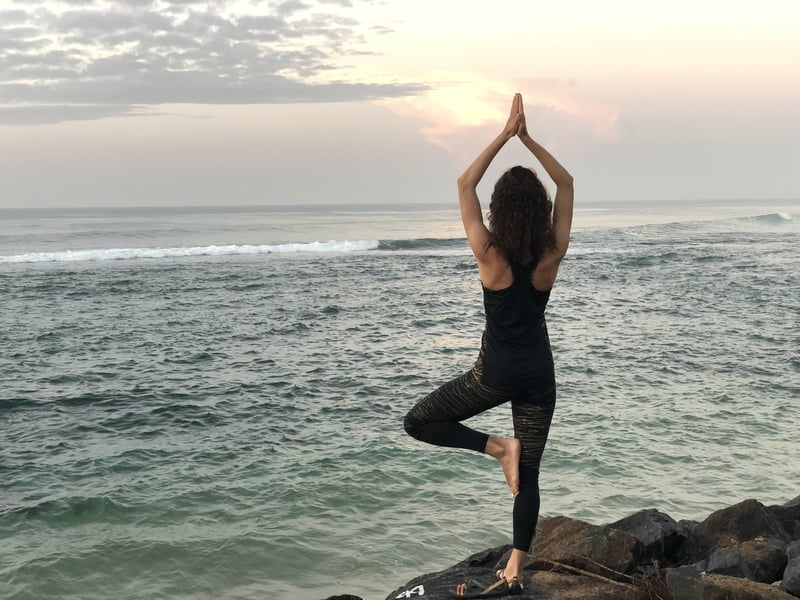
You’ve undoubtedly heard that yoga is a great way to improve your health across the board, but did you know you can use these standing yoga poses to improve your balance?
What is Balance?
What we know as “balance” is really quite a complex term. It means to “maintain physical equilibrium,” according to the Merriam-Webster Dictionary, but it can also mean stability, steadiness, counterbalance, poise, harmony, proportion, equalize, stasis, leveling, equal, and more.
Balance also comprises a number of systems in the body. You have to use a combination of touch, visual cues, the delicate balance system within your inner ear, your nervous system, and even your core to maintain your balance. Practicing yoga is one way to help you improve your stability.
Benefits of Yoga for Improving Your Balance
So, what does yoga have to do with improving your balance? Once you get to know your body and are able to develop a mind-body connection, you’ll find yourself better able to control your balance and movement. Plus, practicing yoga on a regular basis can significantly help you get (or stay) flexible, get stronger, tone up, and even help:
- Prevent falls
- Avoid uneven, unbalanced muscle groups
- Improve your posture
- Provide better mental clarity
- Reduce stress
How to Improve Your Yoga Poses for Better Balance
So, you see the value in using standing yoga poses to help improve your balance. Now, learn how to do the poses even better for enhanced benefits.
Start your standing yoga poses from your feet and work your way up. Line up your feet first, with the outsides of your feet parallel. Then stack your knees and legs directly over and in line with your ankles. The hips are then stacked over the knees, with the shoulders over the hips. Continue up your body to align your core, torso, and head.
Work on your poses slowly until you master them. There’s no sense in rushing through poses only to get off balance and possibly fall or injure yourself. Keep your eyes straight ahead (or fixed on something stable overhead, depending on the pose). Focusing on one point can help you better maintain your balance as you work your way through the poses.
Try These Standing Yoga Poses to Improve Balance
These standing yoga poses, when done on a regular basis, can help you improve your balance as well as get stronger and more flexible.
1. Mountain Pose (tadasana)
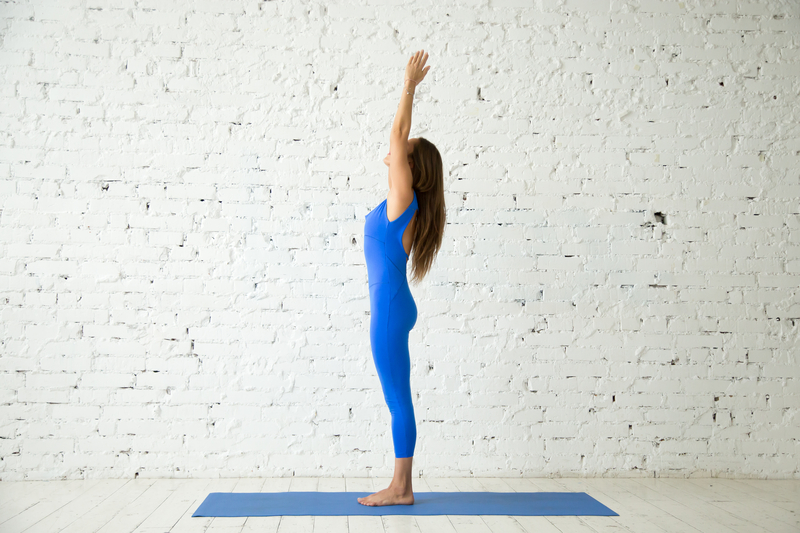
Start by standing with your feet either together or slightly apart and parallel (whichever is more comfortable for your body) with your legs straight and arms by your sides. Next, raise your arms out in front of you and up until they are straight overhead, relaxing the shoulders down. Feel a good stretch through your whole body, breathe out, and bring your arms back down to the start.
2. Forward Fold (uttanasana)
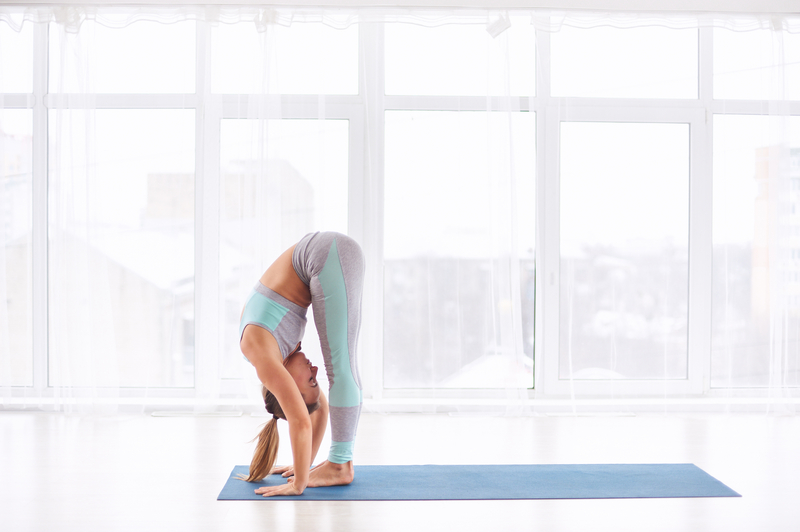
Next, gently fold forward at the waist, keeping your arms straight until your hands reach the ground in front of your feet (if you can) or resting gently on the front of your shins. Breathing in, lift back up only until your back is parallel with the ground and pause. Breathing out, lower your upper body back to the ground and then stand up straight again as you take another deep breath in.
3. Tree Pose (vrksasana)

This challenging one-legged pose will really work on your balancing abilities. You may need to start this one slowly and work your way up to doing this without support and for longer periods. Start with both feet on the ground with your hands together over your heart.
Place your weight on your right leg and foot. Bring your left knee out to your side and slowly slide your left foot up the inside of your right leg until you can comfortably rest your foot against your leg. This can be on your calf or on your thigh, but avoid placing your foot directly on your knee, which can strain the knee.
RELATED: Ditch the Glucosamine for Joint Issues. Try These 3 Must-Have Joint Nutrients Instead
Make sure your body is aligned (you don’t have one hip or shoulder jutting out for support). You can leave your hands at your heart, or press them up overhead, either together or apart.
Hold this pose for a count of five and then slide your foot back down to the start. Repeat on the opposite side.
4. Triangle Pose and Twist (utthita trikonasana and parivrtta trikonasana)
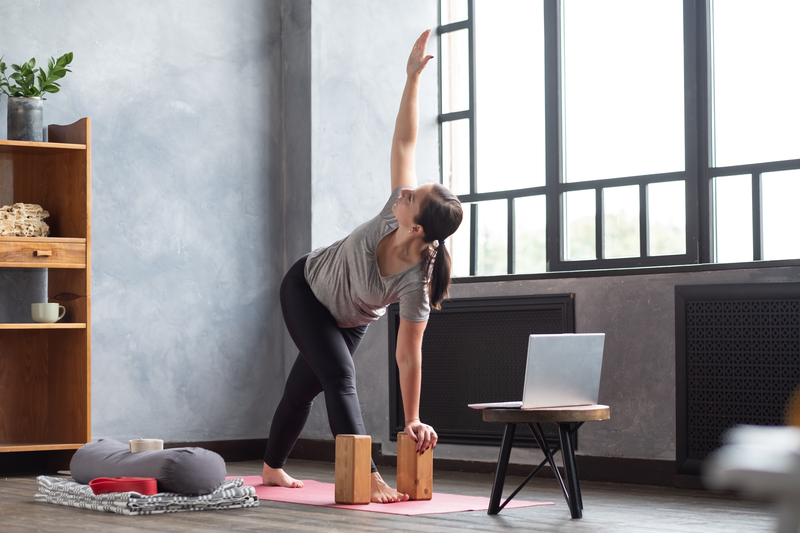
Start by standing sideways (with one foot closer to the top of the mat and one foot closer to the bottom), so your feet are much wider than hip-width apart. Have your front foot pointed forward with your back foot at a slight angle toward the front of your mat.
Bring your arms straight up and out to your sides while keeping your knees straight but not locked out. Next, reach forward and then bend at the waist to place your hand on your shin or on a block or the floor (depending on your flexibility) while keeping the arms and legs straight.
For the Triangle Twist, twist your upper body and head to the right, keeping your arms out to the sides until the arm that was up in the air is on your leg (or a block) and the arm that was on your leg or the floor is now up in the air. This is a challenging pose, so it helps to use a block or even a chair as you both bend and twist your body while breathing deeply. Hold this pose for a few breaths and then return to the Triangle Pose. Move to the opposite side and repeat.
5. Dancer Pose (natarajasana)
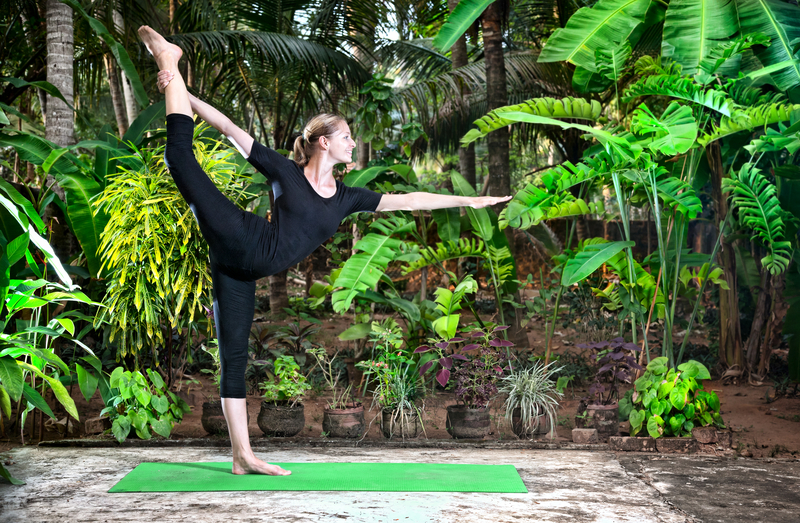
Start by standing with your feet together. Bend your right leg behind you so you’re standing on your left leg. Then reach behind you to gently grasp your right foot with your right hand, bringing your heel up toward your glutes. Reach your left hand up into the air next to your head. Next, bend forward at the waist, balancing on your left leg and bringing your right leg up behind you until your torso is parallel with the ground. Hold this position for a few moments and then return to the start. Take a few deep breaths before repeating the pose while standing on the right leg and reaching out with your left. Beautiful!
6. Chair Pose (utkatasana)
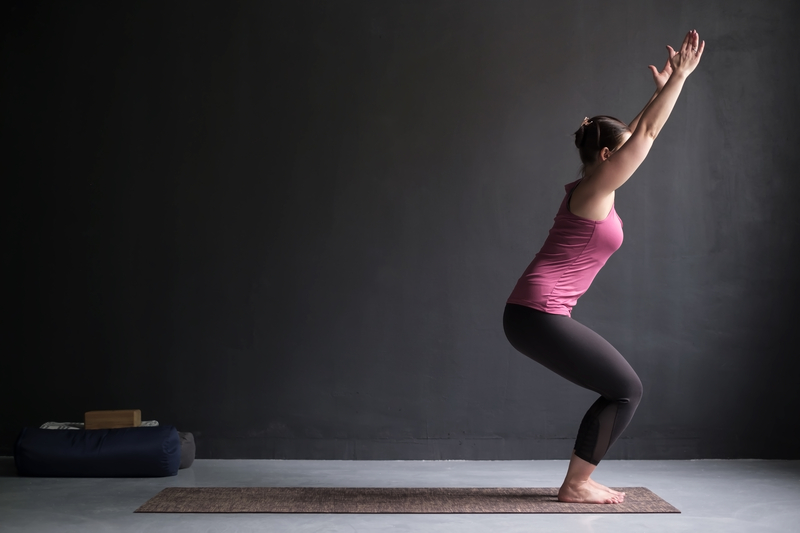
Start with your feet and knees slightly apart (so your legs are parallel) and your arms straight down by your sides. Next, keeping your spine neutral and your butt slightly tucked in, bend your knees to bring your hips back and your torso forward, lifting your arms up until they are next to your ears. Hold this “sitting” pose for a count of five, and then return to the start.
Try these standing yoga poses a few times a week to improve your balance. With consistency and patience, you can vastly improve your health—physically and mentally—including your strength and flexibility and, yes, your posture and balance.




 7 Signs Your Body is Seriously Low on Collagen (not just wrinkles)
7 Signs Your Body is Seriously Low on Collagen (not just wrinkles) Health Expert: "Turmeric Doesn't Work (unless...)"
Health Expert: "Turmeric Doesn't Work (unless...)" 3 Warning Signs Your Probiotic Supplement is a Total Waste
3 Warning Signs Your Probiotic Supplement is a Total Waste

